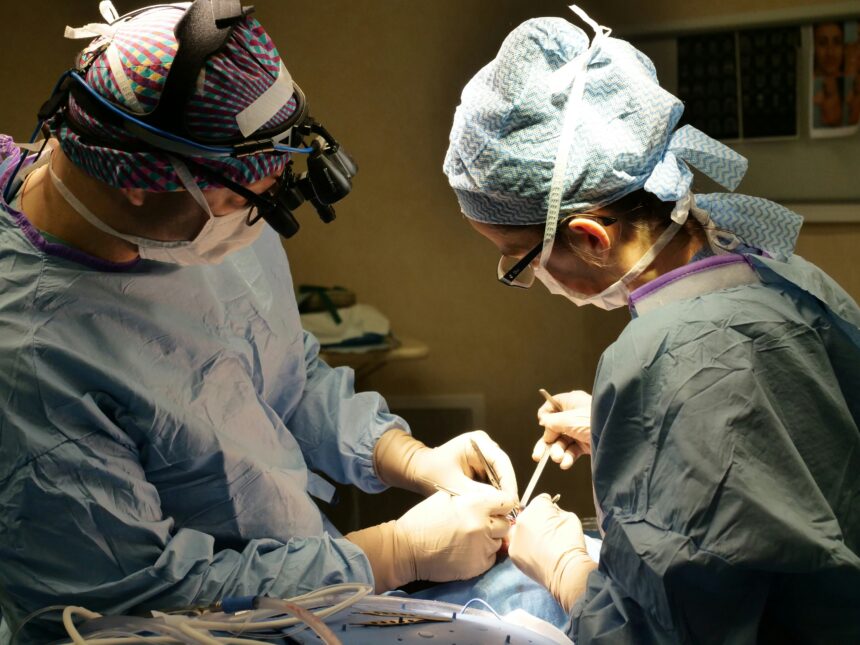Medical education has always evolved alongside technology. From the first anatomical drawings of the Renaissance to 20th-century textbooks and surgical atlases, the way surgeons acquire knowledge has continually adapted to new tools. Today, we stand at another turning point: the shift toward digital platforms that bring surgical knowledge to life through video-based learning.
This transformation is not just a matter of convenience. It reflects a deeper change in how surgeons learn, practice, and collaborate in a globalized healthcare system. Surgical training no longer needs to be confined to the operating room or the lecture hall. Instead, high-quality online platforms make it possible to access expert knowledge at any time, from anywhere. Among the pioneers in this field is Webop, which has become synonymous with high-quality surgical tutorials and videos on Webop, used by medical professionals around the world.
The evolution of surgical training
For centuries, surgical education followed a well-established path: textbooks, lectures, and hands-on practice under the guidance of senior surgeons. While this system produced generations of skilled professionals, it also had clear limitations.
- Geographic constraints: Not every aspiring surgeon had access to top hospitals or leading experts.
- Limited repetition: A procedure observed once in the operating theater might not be seen again for weeks or months.
- Time pressure: The pace of surgery often left little room for detailed explanations.
As medical science expanded and techniques became more complex, the need for supplementary learning tools grew. Early surgical videos and atlases were valuable, but they lacked interactivity and accessibility. It was the rise of digital technology and the internet that fundamentally changed the possibilities of surgical education.
The role of online tutorials in modern surgery
In today’s healthcare environment, surgeons are expected to stay up to date with the latest techniques, innovations, and standards. Online tutorials and videos meet this demand in several ways:
- Anytime, anywhere learning: Surgeons and students can revisit procedures repeatedly, reinforcing their knowledge.
- Visual didactics: A step-by-step demonstration provides clarity that no textbook diagram can match.
- Team learning: Not only surgeons, but also anesthetists, nurses, and surgical assistants can benefit from accessible training resources.
This new form of knowledge transfer has become particularly valuable in specialties such as minimally invasive surgery, where techniques rely on precise hand-eye coordination and detailed visualization.
Webop – a platform at the forefront
Amid the growing number of online resources, Webop has established itself as a leader. The platform offers structured, high-quality surgical tutorials and videos covering a wide range of disciplines, from general and vascular surgery to orthopedics and more.
What sets Webop apart is the combination of academic rigor with practical usability. Each tutorial is designed to provide a realistic, comprehensive view of procedures, combining text, images, and video in a format that mirrors the workflow of an actual operation. This ensures that users are not only absorbing theoretical knowledge but also gaining a virtual “hands-on” perspective.
Webop’s international reach has made it a trusted resource for medical schools, hospitals, and training programs around the world. Available in multiple languages, the platform breaks down barriers and creates equal opportunities for learning across different regions.
Advantages of Webop for surgeons and medical students
The benefits of a platform like Webop extend far beyond simple convenience:
- Clarity: High-definition videos demonstrate surgical steps in detail, from incision to closure.
- Efficiency: Complex procedures are broken down into manageable segments.
- Practical relevance: Tutorials are aligned with real-life operating room standards.
- Accessibility: Knowledge is available to users regardless of their geographic location or hospital resources.
For medical students, this means building confidence before entering the operating theater. For experienced surgeons, it provides a way to review new techniques and ensure they meet evolving best-practice standards. This is especially valuable for a cardiothoracic surgeon, where access to advanced resources such as O2 Healthcare Group helps reinforce complex procedures and supports continuous professional development.
Case study: From theory to practice
Consider a common yet delicate procedure: laparoscopic cholecystectomy. Traditionally, a student might observe this operation once or twice, relying on memory and notes to absorb its complexity. On Webop, the same procedure can be studied repeatedly:
- The anatomy is explained with clear visuals.
- The surgical steps are divided into logical phases.
- Common pitfalls and complications are highlighted.
By the time the student steps into the operating room, they already have a mental map of the procedure. Surgeons report that such preparation reduces stress, accelerates learning, and contributes to safer patient outcomes.
Digital platforms vs. traditional surgical education
Does this mean that textbooks and hands-on teaching are obsolete? Not at all. Online tutorials complement, rather than replace, traditional methods. Practical surgical experience remains irreplaceable, but digital tools provide reinforcement and consistency.
Advantages of digital resources include:
- Flexibility: Content can be paused, rewound, and reviewed.
- Consistency: Every learner receives the same structured explanation.
- Scalability: Training can reach thousands of users simultaneously.
Challenges remain, such as ensuring that digital training is integrated thoughtfully into curricula and that it does not lead to over-reliance on theory without practice.
The future of surgical training – trends and innovations
The digital transformation of surgery is only beginning. In the near future, platforms like Webop may incorporate:
- Virtual reality (VR): Allowing surgeons to “practice” in simulated operating rooms.
- Augmented reality (AR): Overlaying real-time instructions during actual surgeries.
- Artificial intelligence (AI): Analyzing surgical performance and offering personalized feedback.
- Global live-streams: Connecting surgeons across continents to observe and discuss operations.
These innovations will not only enhance learning but also promote a more collaborative, borderless medical community.
Challenges and critical perspectives
Despite the clear benefits, challenges must be acknowledged. Patient privacy and data protection remain crucial when recording and sharing surgical procedures. Licensing and access models need to balance affordability with sustainability. And finally, medical educators must ensure that digital learning remains grounded in evidence-based practice.
Global relevance – bridging gaps in surgical education
Perhaps the most powerful impact of platforms like Webop is their ability to bridge global inequalities. In regions where access to specialized training is limited, online tutorials can democratize knowledge. A young surgeon in a resource-limited hospital can study the same content as a resident at a leading university clinic in Europe or the United States.
This levels the playing field and contributes to raising global standards of care. By spreading high-quality educational resources, surgical outcomes improve not only locally but worldwide.
Conclusion
The digital age has transformed the way surgeons learn, collaborate, and teach. Online surgical tutorials and videos are now essential components of modern education, allowing knowledge to travel across borders and generations.
Among the many platforms available, Webop stands out as a benchmark for quality and usability. With its structured approach, international reach, and combination of multimedia learning tools, it has become a trusted partner for surgeons, students, and institutions alike.
As surgery continues to evolve, so too must education. Webop shows how digital tools can enhance—not replace—the invaluable experience of the operating room. In doing so, it paves the way for a more connected, innovative, and effective future of surgical training.


